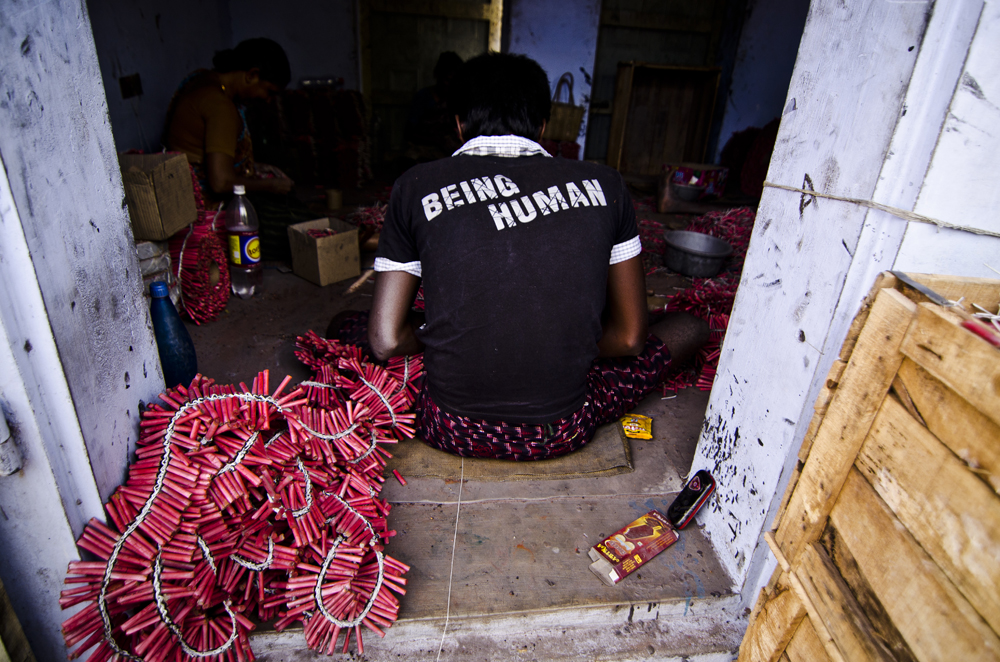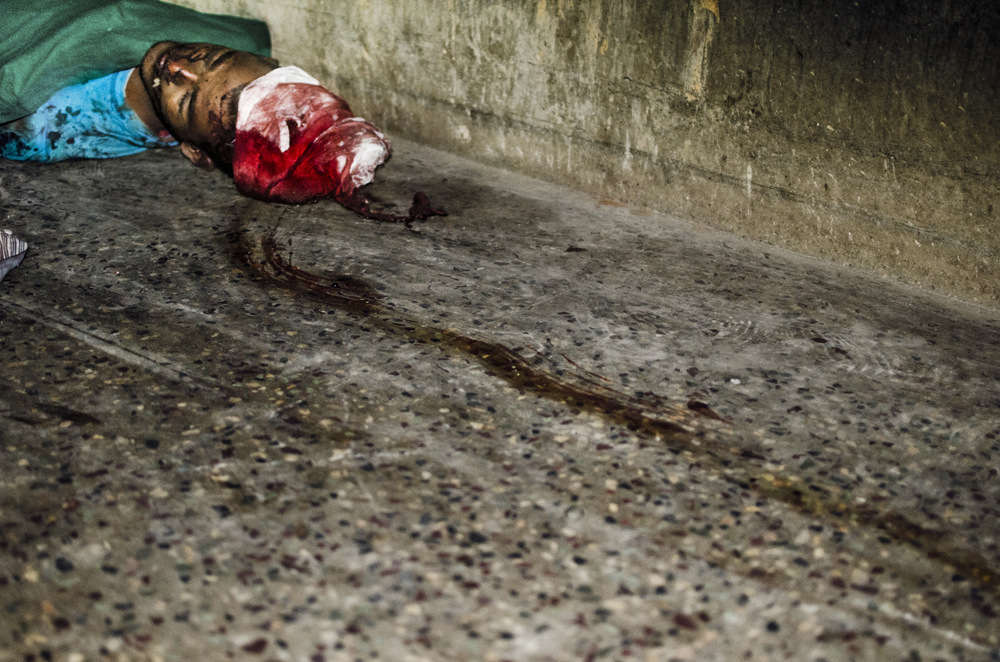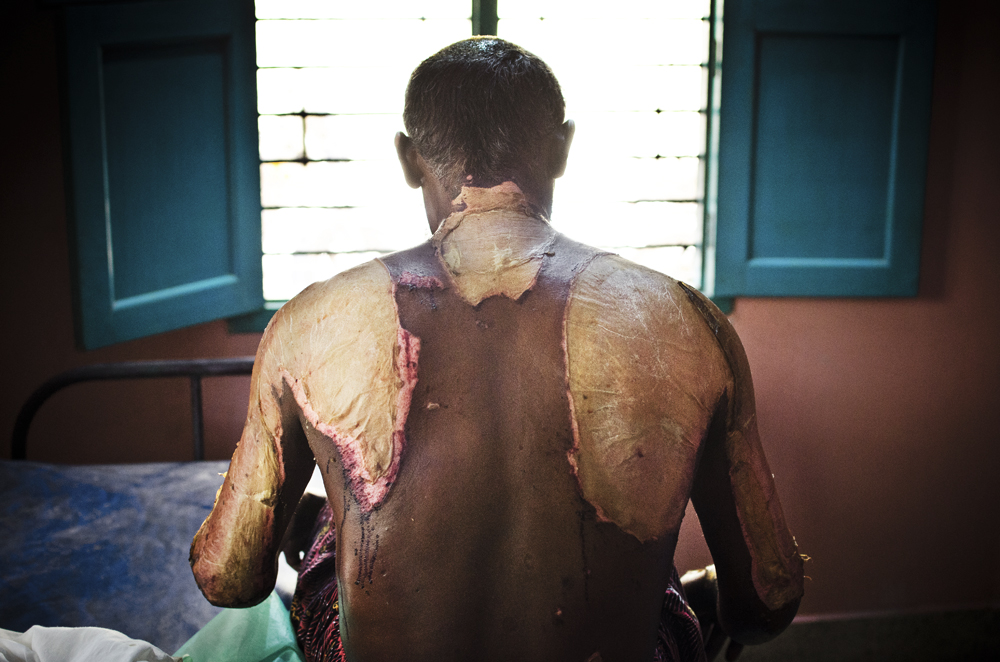CONTAINS DISTURBING CONTENT
I dedicate this to Chitra, a fire accident survivor from many years ago.
I started this project after seeing a photograph of Chitra. I wanted to meet her, share how I felt and wanted to help her financially for the operation. However, when I went to meet her, her mother asked me to leave immediately as I was not the first one to take photos of her and make promises of help. It took me hours to convince her and meet Chitra.
I now have a friend from Sivakasi, and a reason to do a story on life in the factories of Sivakasi.
Sivakasi, a town in Virudhunagar district of Tamilnadu, is the uncrowned capital of India’s fireworks industry. The town, fondly called Little Japan by Jawaharlal Nehru, has around 800 factories involved in making fireworks. As Diwali, the Hindu festival of lights usually celebrated in October/November, approaches, all factories in Sivakasi go on a production overdrive. Caution is thrown to the wind, making it a most dangerous job. Human right violations and labour safety laws flouted are commonplace and the factories are notoriously out of bounds for journalists and photographers.
Not that the locals have many options. Sivakasi experiences meagre rainfall and the land is not too fertile for agriculture, forcing many to seek employment in the fireworks industry. As many as 1,00,000 people are directly or indirectly dependent on the manufacturing and sale of fireworks for their livelihoods in Sivakasi. Lack of proper safety measures and overburdening workers with tight deadlines causes many accidents in the factories. Most accidents go unreported, but it is said that about 150 people get injured a year on average in fire accidents. Deaths are not unheard of either. Children who lose their parents in fire accidents take the same job and the vicious circle continues.
On Sep 5th 2012, a major accident at one of the factories caused 53 deaths and many more were injured.
This is my effort to document the work conditions of the people in the fireworks industry and also the accident. Hope these factories become safer places to work and the people living in the cities understand what goes into the making of their one night of celebration.

Paper used for crackers is dried in sunlight.

Workers working in a small room inside the factory. 5-10 workers are made to work in small rooms that can barely accommodate 2-3 people. The huge amount of gunpowder thus stored in the rooms is a major contributor to the damage during accidents.

An old woman at work in a matchstick factory.

A worker’s face smeared with harmful sticky chemicals used to manufacture fireworks. These chemicals sticks to their hands permanently after working in factories for years and causes health issues.

A child working in a factory after school hours.

Children work from homes as contract labour making the paper cones that are later stuffed with chemicals to make fireworks.

A baby sleeps in a hammock inside the factory.

Hands of an old woman working at a matchstick factory.

A worker fills chemicals inside paper tubes to make crackers. The chemical mixture catches fire if allowed to dry and the workers have to ensure that it remains wet.

A worker inside the factory.

On September 5 th 2012, a major accident in a fireworks factory rocked Sivakasi. 53 died and 250 were injured in the accident.

A rescue team surveys the remains of the destroyed factory.

Chemicals used in fireworks strewn all around the storage room after the accident.

The accident took place minutes before the workers were to come out of the factory and have their lunch. An unopened lunch box lying on the grounds inside the factory.

The magnitude of the blast was so powerful that the bodies of victims were torn apart and thrown far away.

A trail of blood marks left as the victim, who had died of head injury, was dragged into the mortuary.

A worker who had suffered a head injury when he went inside the factory to rescue people.

The accident took place as the bullock cart carrying the waste from factory caught fire due to friction. The worker driving the cart suffered major burns.

An emotional scene inside the hospital as the family sees its injured son.

An injured worker. I hope the lives of workers in Sivakasi change for good in the future.
Bio:
I am a self-taught photographer, born in Chennai and an engineer by graduation. I started pursuing my passion for photography seriously only in September 2010, when I bought my first DSLR camera. I felt that I could express myself more with my camera than any artistic medium. I look for strong emotions and try to tell a story in the best possible way I can through my photos.
My work is represented by Falcon Photo Agency.
http://chhaayaachitram.wordpress.com
